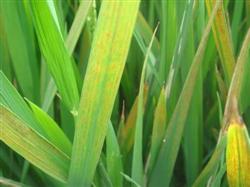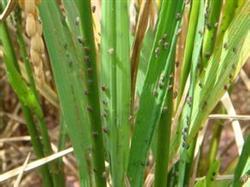Matters needing attention in Young panicle differentiation of Rice
Rice cultivation is very common in China, and almost every family in rural areas has a certain area of rice fields. Rice has been planted in China for thousands of years, although the planting technology is more mature, but there will still be the phenomenon of planting failure. That is mainly because the surrounding environment is not well controlled during the young panicle differentiation of rice, so what do we need to pay attention to during the young panicle differentiation? Let's take a look at it with the editor.

1. Lighting
Light is closely related to the growth of rice, especially during the differentiation of young panicles. There is no guarantee that sufficient light will affect the differentiation of young spikes to a certain extent, or even fail, we can not control the time of young panicle differentiation, but we can adjust the environment, if we are in cloudy and rainy weather, we should make up the light in time. And the seedlings should not be closed too early, otherwise the field will be closed without light, resulting in the failure of young panicle differentiation, and the development of branches and spikelets will also be affected and aborted in severe cases.
2. Temperature
The temperature requirements for different stages of rice growth are different, and the most suitable temperature for panicle differentiation is about 27 degrees, but because the temperature varies greatly from day to night, the temperature should be controlled at 30-35 degrees during the day and at least ten degrees at night. Only in this way can it be more conducive to the differentiation of young panicles, and the lowest temperature that can be borne during the period of young panicle differentiation should not be lower than 15 degrees. The temperature needed for cell division is higher, and the development temperature of rice panicle can reach more than 40 degrees. Only by ensuring the appropriate temperature can the normal growth of rice be ensured.
3. Moisture
As we all know, growing rice requires a lot of water, especially in the young panicle differentiation stage, when the water demand is the highest in the whole growth period of rice. The water demand of this period can require the water content of the field to reach 90%. If the rice field does not have sufficient water supply to grow, it will hinder the development of young spikelets. However, the amount of water should not be too much, which would affect the respiration of the roots, affect the absorption of nutrients, lead to the deformity of rice ears and the phenomenon of empty grains, and affect the yield.
4. Nutrition
During the period of young panicle differentiation, many new branches and leaves will continue to grow, and the nutrition required will gradually increase. One of the peak periods of formal rice fertilizer demand at this stage, topdressing should be carried out in time to promote bud formation and spikelet differentiation, which is what we often call promoting flower fertilizer. Then it is the fattest again about a week before heading date, which can prevent the abortion of spikelets and promote the growth of plants. During this period, rice absorbs nutrients most quickly and consumes most quickly, so there must be enough fertilizers to ensure the nutrients needed for growth.
The spike differentiation period is equivalent to our infancy, so we should take good care of it to prevent injury and ensure the healthy growth of the baby. The principle is the same. If the management work is not done well, it will have a great impact on the yield and quality of rice. Therefore, we should pay attention to a lot of observation, find problems to solve problems, so that we can better increase production. That's all for today's introduction. For more information, please continue to follow us!
- Prev

Rice seed soaking technique
Rice premature senescence refers to the premature senescence of rice leaves from heading to maturity, brown leaves, dirty white death at the top of the leaves, thin and curved leaves, weak root growth, and even a few black roots. There are many factors causing premature senescence of rice, except for diseases and insect pests, there are mainly the following.
- Next

Identification and Control of Rice Diseases and insect pests (2)
Rice brown planthopper is also known as brown planthopper, commonly known as Ascaris lumbricoides, soft shell Ascaris, Ascaris, midges. Scientific name Nilaparvatalugens (Stdl) Homoptera, Homoptera. Brown planthopper (Nilaparvata lugens) is one of the main rice pests in China.
Related
- The first cup of black tea in spring, the flavor and history of tea gardens in Kenya, Africa
- The computer can not only choose potatoes, but also grow tea rice. AI will grow winter oolong tea champion.
- It is not only the inflated tea bitten by insects, but also engraved with the four seasons tea in Beipu.
- The Oriental Beauty Tea Festival in Zhuxian County takes the stage at the weekend to experience the plus-size feast of oil tea.
- & quot; Oriental Beauty Tea & Exploration of Emei in Hsinchu, the hometown of quot;
- The new variety of strawberry "Tainong 1" dessert is the first choice with mellow aroma. Crimson gorgeous
- History of Tea in Taiwan: from Wild Inner Mountain to Export Tea Garden
- Two types of Taiwan Oriental Beauty Black Tea won the British three-Star Award for Childhood Tea Xiang Zhang Jiaqi changed from pilot to champion tea maker.
- Banana species and varieties: the planting history of Taiwan Xianren banana and dwarf banana is long, is banana disease resistant?
- Coffee planting Technology: Qianjie Coffee from Seedling to harvesting

